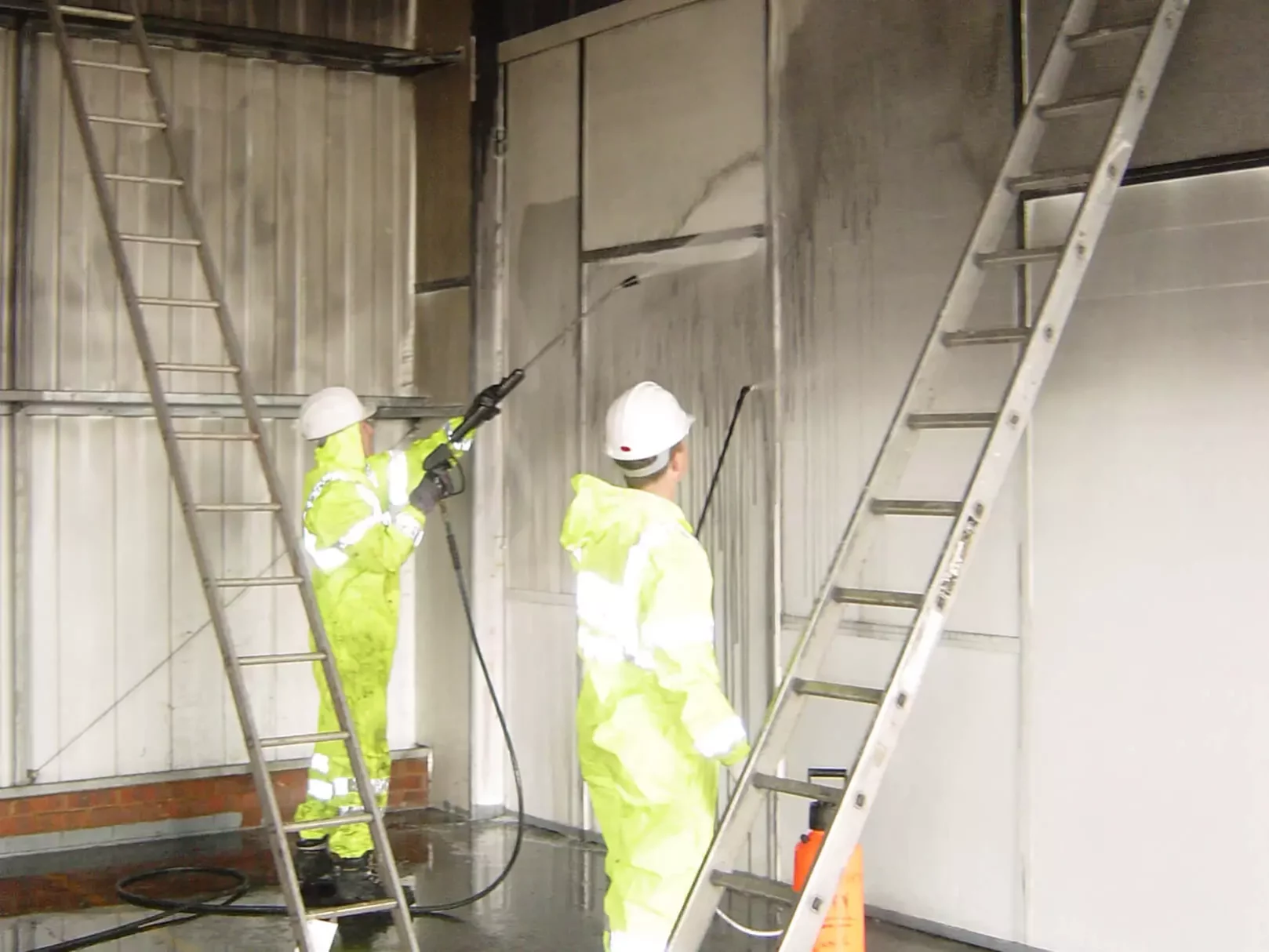When a fire broke out at a 19-storey London tower block on Friday 7th May 2021, it brought back a lot of painful memories of the Grenfell Tower fire of 2017, which killed 72 people and led to a public inquiry and changes to the laws concerning high-rise buildings.
While, fortunately, nobody was killed in the latest fire, two people were taken to hospital for treatment, and many more treated at the scene. The fire took more than three hours to put out and required the work of 120 firefighters, who had to enter the building to rescue residents.
Billowing thick black smoke was visible from miles around, and reached the top of the building all the way from the source of the fire on the eight, ninth and 10th floors. It is likely that every floor will have been exposed to smoke and fire damage.
Comparisons with Grenfell
As the news channels and social media began to broadcast footage of the New Providence Wharf fire, it was immediately apparent why people were being reminded of the horrific scene of the Grenfell Tower fire.
The image of a high-rise London building in flames in itself would be enough to conjure up memories, but more worryingly there were closer connections, not least the cladding.
It is thought that around 20% of the building’s façade is covered with aluminium composite material polyethylene (ACM PE) cladding panels, the very same material which was found to be a key factor in the Grenfell Tower fire.
As a result of the ongoing public inquiry around the Grenfell Tower Fire, the government have been offering free ACM screening tests and have been asking private owners of buildings over 18m to report the results to local authorities so that private sector blocks with ACM cladding systems can be identified.
Why is ACM so dangerous?
The report from Phase 1 of the Grenfell Tower Inquiry cited the ACM PE cladding panels as the primary cause of the spread of the fire. Not only this, but there was an ‘architectural crown’ at the top of the tower which was deemed to be responsible for the rapid horizontal spread of the fire.
To emphasise how dangerous the ACM PE is the author of the report from the inquiry, Sir Martin Moore-Bick, described the polythene inside the cladding as having “a heat of combustion similar to that of petrol or diesel fuel”.
He added “I am satisfied that, although many different factors played a part, the principal reason why the flames spread so rapidly up the building was the presence of the ACM panels with polyethylene cores, which… melted and acted as a source of fuel for the growing fire”.
In response to this the government have announced that they will fully fund the replacement of all ACM cladding in the private sector at an estimated cost of £200 million. The process of removing the cladding at New Providence Wharf was due to start just three days after the fire.
Sadiq Khan, the Mayor of London, said in the aftermath of the New Providence Wharf Fire “The spectre of the tragedy at Grenfell still hangs over our city. Today we have seen again why residents in buildings with flammable cladding are living in fear.
“It is vital that government, developers, building owners and regional authorities work together to urgently remove the cladding from every affected building.”
Fire and Water Damage Clean-up
Fire destroys lives. The human cost has been made abundantly clear over the last few years, and whole communities have suffered as a result of these horrific incidents.
Even when a fire doesn’t directly impact on the victim’s health, the aftereffects can cause damage long after the fire has been put out. Houses are susceptible to water damage from the firefighting efforts, whether it’s a sprinkler system, or firefighters themselves using their equipment. It is important that this is addressed quickly before mould and rot cause long-lasting damage to your health and the property..
On top of this, smoke residue and soot can have a corrosive effect on furniture, fittings and fixtures, as well as leaving an unpleasant smell. Furthermore, the tiny particles of soot in the air contain chemicals and acid which can cause incredibly harmful health side effects, particularly to the elderly and children. These include asthma, skin irritation and even heart disease and cancer.
Needless to say, if you have been the victim of a fire, it is strongly advised that you seek help from a professional cleaning company as soon as possible that can ensure you are fully protected from any further consequences. Ideal Response offer a full Fire Damage Cleanup and can be with you within 2 hours of your call.
Our highly trained team, with industry leading equipment, we can ensure that the smoke, water and soot is fully cleaned up to avoid further damage to the property or your health. We even offer an odour neutralisation service which will eliminate 100% of the odours left from the soot and ash.
For a free estimate on our Fire and Water Damage Cleanup, get in touch with us today.



